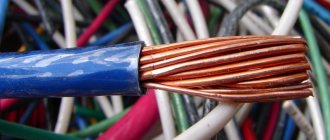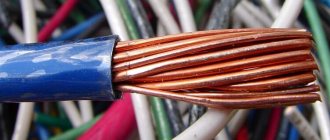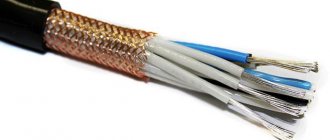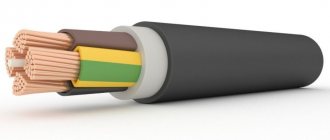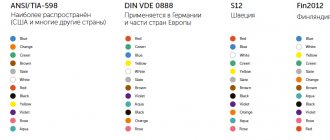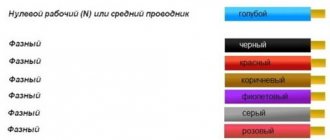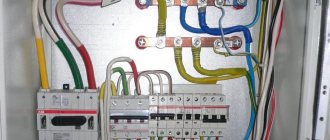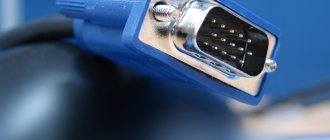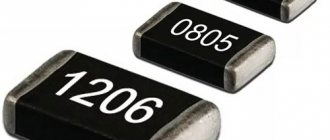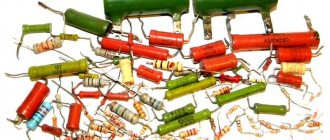USB, or Universal Serial Bus, is a standard connection type and communication medium between a wide range of electrical devices, including computers and peripherals.
It was put into operation in 1996. The idea was to standardize communication or data transfer between peripherals and computers by replacing older communication interfaces such as parallel and serial ports (not to be confused with the communication/data transfer process) and FireWire.
Did you know? The USB standard is governed by the USB Implementers Forum (USB-IF), established by founding companies including IBM, Intel, Microsoft and Nortel.
Where is USB used?
As an industry standard, USB cables are used to connect desktop or laptop computers to external hardware devices such as keyboards, mice, flash drives, printers, and game controllers.
USB interface has become so popular in recent years that you can easily find them even in cars and electrical outlets in homes. Modern smartphones, tablet computers and many portable devices now support USB cables and connectors for faster charging than other types of cables.
Benefits of the USB interface
- Although USB was primarily developed to normalize communication between personal computers and auxiliary devices, there are several other benefits of the USB interface.
- It is self-configuring, which means that there is no need to set up/configure its settings before using it.
- USB devices can be added or replaced to the system without shutting down or rebooting the system (hot-swappable).
- Its power supply capability allows you to power small devices without an additional power cord.
- The USB data transfer protocol and signal reception are always reliable, regardless of its version.
USB types depending on their version
There are two ways to classify a USB cable; based on its version or generation, which relates to the functionality (data speed) of the cable, and on its physical design.
Before we dive into the different types of USB cables, let's first understand a few terms associated with them. A typical USB cable has two connectors, one on each side. One is for the host, which includes all types of computers (PCs, tablets), and the other is for the receiver, any portable device (smartphone) to which data needs to be transferred. The slot into which the USB is inserted is called a port or socket. Anyway, let's get down to business.
Since 1996, four major versions or generations of USB standards have been introduced. These are USB 1.0, USB 2.0, USB 3.0 and USB4. USB4 is the latest.
Table showing the different versions of USB and the transfer speeds they support.
The original USB, USB 1.0, supports a dual-speed bus with a data transfer rate of 1.5 Mbps for low-cost devices with low data transfer rates (keyboards, mice) and 12 Mbps for devices with high data transfer rates (printers, disk drives). This multi-bus architecture is extended to USB 2.0 (launched in 2001). However, a third, "high speed" bus was added with a maximum data transfer rate of 480 Mbit/s.
The Universal Serial Bus first gained attention in 1988 (when USB 1.1 was introduced) with the release of the Apple iMac. It was the first widely known product with USB technology. PC manufacturers soon followed suit, replacing legacy ports with USB in their products. So the initial success of USB is tied to the success of the iMac.
Micro USB pinout
To connect gadgets such as mobile phones and digital devices, smaller ports have been developed - micro and mini. The latter are considered obsolete and are rarely used. Micro is a universal standard for most modern devices.
The micro-USB pinout is as follows:
- 1 – red, provides power supply, voltage 5 V;
- 2 and 3 – white and green for data transmission in two directions;
- 4 – lilac, closes the common wire. This ensures support for the OTG function;
- 5 – black, ground wire.
The connectors are also divided into A and B. In the first case - “mother”, designated micro-AF (BF), in the second - micro-AM (VM).
Contact No. 4 in type B is not used.
Extensions are available for micro and mini ports. They are useful when there are connectors only on the back side of the system unit. In this case, there is no need to crawl under the table.
The third generation micro USB connector is slightly different. It uses a 10 pin connector made of two parts, one of which corresponds to the old version. Most likely, the manufacturers intended to make the plug universal, with the ability to connect earlier models, but for some reason they abandoned this idea. Contacts 1 to 5 are the same as the previous modification. The rest correspond to the inputs to connector version 3: 6 and 7 are intended for transmitting information via the high-speed protocol, 8 is additional grounding. And 9 and 10 provide data reception at high speed.
Valera
The voice of the construction guru
Ask a Question
The mini USB pinout is found only in older versions of the interface; it is not implemented in the 3rd generation. The color scheme is completely identical to the micro version. The only differences are in size.
USB 3.0
USB 3.0, released on November 12, 2008, revolutionized the industry. It introduced a much higher speed bus with data rates up to 5 Gbps (in addition to existing transfer rate modes) and higher output power (900 mA compared to 500 mA in previous versions). Moreover, it was backward compatible with USB 2.0, allowing for interoperability. This version of USB is known as SuperSpeed.
USB 3.0 Gen 1 ports
The USB 3.0 standard was replaced by USB 3.1 in 2014. Data transfer speeds in USB 3.1 Gen 2 (SuperSpeed+) have been increased to 10 Gbps. One of the important changes brought forward by the USB 3.1 standard was the replacement of their previous 8b/10b encoding scheme with the more efficient 128b/132b encoding variant 64b/66b (which converts 64-bit data to 66-bit line code). This significantly reduces the encoding overhead, resulting in comparatively higher effective data rates.
The next USB 3.2 standard was released in 2022. As expected, it introduced a new, much faster transmission mode while retaining all existing modes. This allowed USB-C cables (3.1 supported) to run up to 2x their native speeds (5 Gbps to 10 Gbps for USB-C 3.1 Gen 1 cables and 10 Gbps to 20 Gbps for Gen 2). We'll talk about USB-C cables later.
Several USB 3.0 cables for connecting external drives: connectors, markings
I welcome everyone who stopped by. This review will focus, as you probably already guessed, on a short review (photo brag) of several USB 3.0 cables and adapters. The review will contain a short excursion into the markings and a little testing, so if anyone is interested, you are welcome under the cat.
General view of USB 3.0 cables:
Appearance:
The first cable I would like to tell you about is a banal USB 3.0 Type A (male) -> USB 3.0 Type A (female) . Supplied in a simple plastic bag:
Cable length 1m, cable marking E301195 AWM STYLE 2725 80°C 30V VW-1:
It turns out that most types of cables are standardized by a certain American company, Underwriters Laboratories Inc., which has developed certain standards and charges a certain fee for their certification. So, judging by the markings, the cable specifications are as follows:
— E301195 is a unique manufacturer code (in our case, the manufacturer is Espada)
— AWM (Appliance Wiring Material) – a subclass of conductors designed to connect electrical devices and components
— 2725 is a specific code for a specific type of cable, in our case “Multiple-conductor cable using non-integral jacket” (one of the types of multi-core cables). The code spec contains a description of the cable structure, the minimum diameter of the cores, their material, color marking, as well as insulation material
— 80°C – maximum operating temperature
— 30V – maximum operating voltage (30V AC)
— VW-1 – a sign that the cable has passed the Vertical-Wire Flame Test (UL 1581 VW-1) on a special stand. The essence of the test is to make sure that when exposed to temperature (from the burner) for 15 seconds, the cable insulation does not catch fire. A total of 4 approaches are done. After this picture, I think everything will become clear:
Those who are interested can look at more detailed descriptions on the Internet.
The cable looks to be of fairly high quality; through the blue insulation you can “feel” the shielded braiding that protects the cable from all kinds of interference. The braid is connected to both metal connectors and is galvanically isolated from the contacts. The connectors themselves are gold-plated (coated with titanium nitride to protect against oxidation) and fused into a fairly soft insulating layer, somewhat reminiscent of silicone. The connectors have a standard 9 pins (4 main pins for USB 2.0 compatibility and 5 additional pins):
A nice bonus is that the USB 3.0 female connector is recessed and does not stick out, like most similar cables.
For a little testing, I connected a high-speed Netac U903 64GB USB flash drive directly to the USB 3.0 port of the computer, the speed was as follows:
Then I connected the flash drive via a USB extension cable. The speed did not drop at all (within the error limits of the programs), the CRC sums of the copied files were the same:
Overall, in my opinion, a high-quality USB 3.0 cable (extension cable). Offline prices start from 350 rubles.
You can buy this cable in the GearBest store - here. Don’t forget that a third of the cost can be knocked off with points.
Next in line is the proprietary SSK USB 3.0 Type A (male) -> microUSB 3.0 Type B (male) , 60cm long.
You can buy this cable in the GearBest store - here.
This cable is supplied in a glossy antistatic bag:
Inside the bag, in addition to the cable itself, there is also a quality certificate:
In addition, there is a security code on the back of the bag; by erasing it and entering it on the manufacturer’s website, you can verify the authenticity of the product:
Cable marking E341631 AWM 20276 80°C 30V VW-1:
In terms of marking, almost everything is the same, except for the unique manufacturer code and cable type. In this case, the manufacturer is KIM DING TAI GROUP CO LTD (E341631) and the cable type is already “Multiconductor cable with extruded non-integral jacket” (20276). Apparently, the cables are produced to order from SSK, and it already sells them under its own brand.
The connector contacts are also gold-plated (coated with titanium nitride), but the insulation material itself is slightly harder than that of the previous cable. There is also shielding:
The main purpose of this cable is to connect various external drives or adapters that have a built-in bridge (for example, USB -> SATA) with a corresponding output connector. Unfortunately, there is no additional USB connector, but since I don't have power-hungry drives, this isn't a problem for me. If you plan to connect fairly power-hungry external drives from low-power USB 2.0 ports, look for an option with an additional tail, like this:
You can buy it here
Next comes a similar USB 3.0 Type A (male) -> microUSB 3.0 Type B (male) cable, but already 50cm long:
I bought it quite a long time ago, but if I’m not mistaken, it was delivered in a regular bag. You can buy this cable in the GearBest store - here.
Cable marking E318309 AWM 20276 80°C 30V VW-1:
Roughly speaking, the design is similar to the previous SSK cable. The only difference is that it is a different manufacturer. Here, most likely, SHENZHEN CKL TECHNOLOGY CO.,LTD (E318309). Everything else is the same.
There are absolutely no complaints about the workmanship: there is shielding, the contacts are gold-plated, the connectors are securely fused into the insulation. Unfortunately, the additional USB 2.0 tail is also missing:
When comparing cables, SSK is lighter and rougher:
Well, the very last cable in the review is Type C (male) -> USB 3.0 Type A (female) adapter .
You can buy this cable in the GearBest store - here.
It comes in a simple bag:
By and large, this is more of an adapter than a full-fledged cable. I purchased it for the Beelink S1 minicomputer, which I reviewed a month ago. This minicomputer has a high-speed USB Type C port, but there is no adapter for it included:
That's all for me. During the operation of the cables, no problems were found, so I recommend it for purchase!
USB4 or USB 4.0
The latest USB standard, USB4 (or USB 4), expands on the existing capabilities of USB-C cables, providing the maximum USB bandwidth available. It is based on the Thunderbolt protocol, which offers advanced features such as bidirectional data transfer (sending and receiving data on both ends), dual protocol data, and low latency video transmission over a single cable.
USB4 is compatible with Thunderbolt 3 and is backward compatible with the USB 2.0 and USB 3.2 specifications. It supports a maximum data transfer rate of 40 Gbps. Current USB-C cables achieve these speeds through dual-lane operation, where two lanes in the cable transmit data simultaneously.
Intel's base 11th Gen Tiger Lake processor is the first product to support USB4 or Thunderbolt 4.
USB Type-A
USB-A is perhaps the most popular USB (connector or port) that you can find on your PCs, game consoles, portable media players, and smartphone charging ports. The standard USB Type-A plug has a flat, rectangular shape.
Older USB Type-A connectors and ports that support the USB 2.0 standard have four internal pins; one pair is for data transmission and the other is for power. With the introduction of the USB 3.0 standard, five additional pins were added to the original design to make the new USB Type-A (SuperSpeed) ports and connectors faster and backwards compatible with older versions of USB.
USB cable pinout by color
It’s worth starting with the fact that there are several charging connectors. They are most often divided by generation: 2.0 and 3.0.
Additionally, the USB pinout is divided into B (passive) and A (active):
- Active devices include power supply devices. These include: computer, TV, etc.
- Receivers are classified as passive. For example, the USB connector for charging a phone is a B-slot.
Not so long ago, type C also appeared. It has the same connector pinout on both sides. This wire can be connected to the phone from either side.
Second generation 2.0
The classic version has only 4 contacts:
- Red. This 5 volt supply, capable of transmitting a maximum of half an ampere, is designated +5V.
- White. Data - that is, “information electrons” travel along it.
- Green. Data +, similar to the previous one, leads electrons directly to memory cells.
- Black. Ground or Ground, GND is formed in the circuits.
Which side should you look at the charging plug from? All diagrams are shown for the “top” view, which is indicated by 2 square holes on the USB plug. In microformat, the wide side with fixing “fingers” is considered to be the top.
But 4 contacts are not always found. To charge phones, only 2 contacts are needed: +5V and GND. The data wires are "shorted", otherwise the maximum current will not exceed 0.25 amperes (this is why the battery takes so long to charge from the computer).
The micro USB charging connector for the phone may also have a fifth contact intended for OTG connection. It is called ID and is not used under normal conditions. If you need to connect a mouse, flash card, etc. to the phone, it shorts to ground.
In most cases, it does not perform practical functions and is needed for shielding other wires. On pinouts it may be designated as Shield.
Schematically it looks like this. You can see that it is shorted to ground. When connected this way, the charging socket activates the host protocol and can be controlled. Please note that the mode is enabled only on active devices.
In mini USB, the contacts are similar to the micro format, but the order of the contacts is different. Otherwise, the functions, and even OTG support, are similar.
The first generation of USB has exactly the same pinout, with the exception of the OTG pin. In modern technology, such a protocol is rare, but still.
Third generation 3.0
The 3rd generation USB pinout differs in the number of wires - there are 9 of them (sometimes 10 if the OTG contact is activated).
The color layout of the connector looks like this:
- From 1 to 4. They have the same colors and purposes as in the previous generation.
- 5.6. Data transfer via USB 3.0 – RX+- protocol.
- 7. Additional ground - GND Drain.
- 8.9. Reception of data via USB 3.0 – TX +- protocol.
Due to the protocols for transmitting and receiving data, the speed increases significantly. Moreover, the wiring is done in such a way that contacts 1 to 4 are compatible with the previous generation.
The pinout of the micro USB 3.0 charging connector is not compatible with the previous generation. Schematically, all the pins are located close together, which is why the connector is much wider than a standard socket.
In the case of Type C, all pins are also located in a row, but on both sides. For this reason, it is possible to connect them to any side. The pinout looks like this:
USB Type-B
USB Type B ports are typically found on receivers or peripherals such as printers and scanners, which operate at high data rates and are relatively larger in size (compared to other peripherals).
In most cases, the USB cable that connects your computer to your printer or scanner has a USB Type B connector on one side and a Type A connector on the other. Although they are typically dual-purpose, some Type B ports only allow power to be transferred from the host.
There are two versions of USB Type-B. The original USB Type-B connector has a square cross-section with a slightly angled top outer rim. It supports data transfer rates up to 480 Mbps (USB 2.0).
USB 3.0 Type-B connector
An improved version of the Type-B connector, Type-B SuperSpeed, was introduced to make them compatible with the USB 3.0 standard. Type-B SuperSpeed cables with data transfer speeds over 5 Gbps are ideal for connecting PCs with external hard drives and audio interfaces.
USB connector pinout
Remembering the pinout of the USB-A connector is easy. If you turn the connector towards you and the contacts are on the bottom side, then on the left there will be a GND bus, then D+, then D−, and +5V. It must be remembered that in USB devices the metal frame can be connected to the GND line, which should be taken into account when making calls.
USB A connector pinout
Lines D+ and D− are used for data transmission.
USB-B pinout
Initially, the USB-B connector looked like this:
USB B 2.0 connector pinout
It remains in this form even now. You can find it in sound cards, printers, MIDI keyboards, external hard drives.
USB OTG
The USB-2.0 standard included OTG (On-the-Go) functionality, which allows some devices to be used as a host. For example, a smartphone, which when connected to a computer is a slave, but when using OTG it can act as a master.
To do this, use an OTG adapter and through it you can connect a mouse, flash drive, keyboard or printer to a smart device.
The role of the device is determined by the cable: in the plug on the host side, pins 4 (ID) and 5 (Ground) are closed; on the peripheral side, ID is not connected anywhere. In the picture below, the pin ID is called "Sense".
OTG cable pinout
USB 3
Version 2.0 has been replaced by USB 3. Ports, cables and devices of the third version can be identified by the blue color of the connector. Physically, they on the A side seem to have not changed. But that's not true.
The main difference of version 3.0 is the higher data transfer speed (up to 4.8 Gbit/s), which is achieved by adding two additional symmetrical twisted pairs to the cable. One of which is responsible for transmitting, and the other for receiving data.
USB 3.0 port pinout
The operating principle of the interface is not affected by this innovation. The developers physically separated the receiving and transmitting lines.
In 3.0, separate data lines are responsible for receiving and transmitting information.
To maintain backward compatibility, the new circuit also has a regular data line - a white-green pair D+ and D−.
In this case, the new contacts are located separately from the old ones in one connector.
Now let's look at the connector from side B. It has been modified and now looks like this:
But sockets B can also work with connectors of previous versions.
After the release of the 3.1 specification, the 3.0 standard was renamed “USB 3.1 Gen 1”. And the new 3.1 specification with transfer speeds up to 10 Gbps is now called “USB 3.1 Gen 2”.
Type-C
The key point of update 3.1 was the appearance of the USB Type-C connector. It was Type-C that was supposed to replace USB-Mini and USB-Micro, while providing the speed of the USB 3 protocol.
This is the most progressive connector today, which can also serve as USB A; this connector is used on computer motherboards.
Type-C can be inserted into the device from either side. This is achieved thanks to mirror duplication of all signal lines, so the number of contacts reaches 24.
Type C port pinout
Moreover, all devices that support such a connection are also required to have a double set of signals, because it is not known in advance which side the user will connect the connector to.
The USB 3 standard also provides for an increase in charging voltage above 5 volts, but in agreement with the device.
USB Mini and Micro Type B
USB Micro-B Connector
Mini-USB connectors were first introduced in 1998 for electronic devices such as early smartphones and tablet computers. While Mini-A connectors have long been discontinued, Mini Type-B is still supported by a small number of devices.
Micro-USB connectors are designed specifically for modern portable devices such as smartphones and cameras, which are much thinner than earlier devices. The thickness of the Micro-USB connector is almost half that of the Mini-USB.
USB-C
USB-C is an industry standard for high-speed data transfer and power that is now used in a growing number of devices, including the latest smartphones, external SSDs and high-end laptops.
The USB-C connector may at first appear similar to the Micro-USB connector since both have curved edges, although the USB-C connector is slightly thicker and wider.
USB-C connector
Perhaps the most important and desirable feature of USB-C connectors is switchability. This means that USB-C connectors are not oriented up or down (as is the case with USB-A and USB-B connectors). They can be inserted correctly every time without turning over.
Another advantage of USB-C cables is that they carry at least 3A of current at 60W. USB-C to USB-C cables are designed to carry higher 5V current.
USB-C cables based on the USB 3.1 standard have a maximum data transfer limit of 10 Gbps. Older cables that support USB 2.0 can only transfer up to 480 Mbps.
USB 2.0 pinout
This connection specification is the most commonly used. It is fully compatible with the first version, but has higher throughput. There is a high-speed data exchange protocol - up to 480 Mbit per second .
In fact, this value is lower - up to 280 Mbit/s, which is due to the implementation of the protocol. The pinout of the USB connector is indicated by color. It serves as a destination indicator. The approach is standard and mandatory for any manufacturer and significantly simplifies repairs. In the first two modifications the wiring is the same:
- 1 – VCC. 5V power supply, indicated in red;
- 2 - D- - marked in white, data cable;
- 3 – D+ – cable for receiving information, green;
- 4 – GND – grounding, has a traditional black color.
USB 2.0 is divided into 2 types.
- A – connects to the female socket on the hub or computer. This is how you connect flash drives, a mouse, and a keyboard. The connector is fully compatible with the first modification and the second generation. You can connect an older cable to the 3rd generation sockets, but not vice versa. In this case, adapters are required.
- B - connection is made to the male socket - on the periphery. This is how they turn on, for example, a printer. The connector is large, so gadgets such as a mobile phone or headphones cannot be connected this way. Smaller models are produced for them - micro- and mini-USB.
The circuits in A and B are the same, but in A the placement is linear, and in B - from top to bottom - there is a red and green output at the top, and white and black at the bottom.
What's next?
There is a popular saying that “nothing lasts forever,” and in the world of technology, this couldn't be more accurate. While Type-A and Type-B ports and cables are still widely used, USB-C is poised to replace them in the near future.
USB-C port on MacBook
The latest USB-C ports support the Thunderbolt 3 protocol, which provides maximum data transfer speeds of up to 40 Gbps. USB4, which has not yet reached the mass market, standardizes Thunderbolt 3 speeds.
High data and power throughput allows USB-C connectors to connect directly to multiple audio and video interfaces without the need for any adapters. These include MHL (Mobile High-Definition Link), HDMI and DisplayPort devices.
Since 2014, an increasing number of electronic devices, including smartphones, PC/laptop motherboards and external hard drives, have begun to support USB-C. Reversible USB-C cables, which connect to both the host and receiver, are faster and more efficient than the old Type-A and Type-B connectors.
The growing USB-C ecosystem means you'll soon need supported ports and connectors to transfer data and charge your laptops. Although Apple was the first company to introduce USB-C ports on its devices, they are increasingly found on other mainstream devices. Expensive PCs and laptops have at least one USB-C port.
